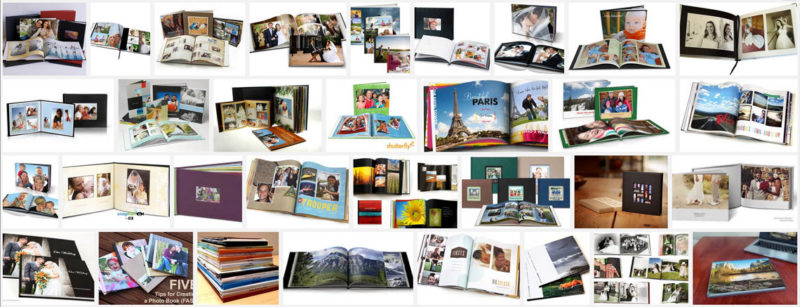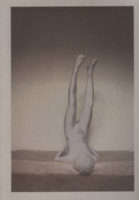There’s a German saying that translates as “chasing a pig through the village.” You might not want to know where it comes from, especially if you like animals (there actually isn’t much to imagine). These days, it’s used metaphorically. It doesn’t mean that someone (or a group of people) is a pig. Instead, it’s employed when there’s a huge kerfuffle around something, where the noise and commotion ultimately is intended to garner a lot more attention than the eventual outcome. Think manipulation in photojournalism.
At the time of this writing, the latest example would be provided by photographs taken by Steve McCurry. Large parts of this latest “scandal” happened while I was traveling, but honestly I probably wouldn’t have paid much attention to it anyway for reasons that I will outline in the following. This is not to say that most of the writing produced around it is without merit — on the contrary. Lewis Bush’s article about the topic provides the best take I’ve seen on the topic, and it also contains quite a few links to articles dealing with the actual problem.
A few weeks earlier, Teju Cole had written a piece about McCurry that, to me, felt a bit like shooting fish in a rather small barrel. Cole’s piece didn’t talk so much at all about the kind of manipulation that moves pixels around and changes an image’s saturation. Instead, he pointed out the rather particular gaze employed by McCurry, a gaze that, in the case of the photographs in question, aestheticizes India in ways very palatable to Western audiences. Unfortunately, instead of then directly taking his audience to task (we’ll come back to why this matters), Cole stayed with the photographer, comparing him with Raghubir Singh. This then led to a conclusion that I don’t think holds as much water as those who vigourously applauding the piece might think it does.
It is true, the onus to make work is always on the photographer. It might say something about McCurry that he would portray India the way he did. But I don’t think it says something only about McCurry, the photographer, as Cole implies, while completely leaving out McCurry, the businessperson who has to make a living (much like Cole, me, and pretty much everybody else). In fact, McCurry has made quite a successful career out of photography. For me, the problem with his work isn’t so much that he “manipulates” his pictures (seriously, people, it’s photography). It’s that for the most part that they’re such insufferable kitsch. Oh, and there’s another problem: there is high demand for that stuff (how many of those subscribing to the New York Times might have one of those McCurry books at home?).
If a photographer very successfully provides the pictures that people want (both the publishing industry as much as viewers at the end), why are we talking about what that photographer does to get them? Why aren’t we talking about what it says about us that those are the images we want? It obviously is a lot easier to simply leave the onus on the photographer. But honestly, in most cases I am just not willing to go there any longer. It just feels too disingenous to me, to suddenly start a mob around a photographer who’s just doing what is in such high demand.
As much as I enjoy the metaphor of the naked emperor who gets “unmasked” by a child, there’s something strange and unsettling seeing it applied it to these kinds of photojournalistic “scandals.” Sure, we could discuss the role of the tailors/weavers, as we usually do. But I’m not sure that’s really the point of the tale.
In the McCurry case, fortunately, there was a very different take. A.D. Coleman published a letter written by Robert Dannin, who worked at Magnum and with McCurry in the late 1980s. Dannin squarely puts the onus on the publishing industry in general, and on National Geographic in particular. These are the kinds of discussions we — as the general public — are rarely exposed to. But to me, it seems completely obvious that we have to talk about this aspect of photojournalism, which is immensely important: the role of the publishers (who might or might not also still commission work). Given McCurry’s photographs are such kitsch, why are they so widely coveted by the likes of National Geographic? What does that tell us about the publishing industry?
And what does it tell us about ourselves? What does it tell us about how we like to get the world presented? This is where each and every discussion of some “manipulation” scandals has completely and utterly failed to do anything meaningful: sure, you can pretend that photojournalists are those independent voices that solely determine both what’s in the pictures and what those pictures look like. But seriously, that’s as infantilizing as it is insulting — both to the photographers in question and to us as the larger audience.


The reality is that manipulation is very common in the world of the media, and photographs play a large part of that. Most of the manipulation comes not through the photographs per se, but through how they’re used and presented. Let me give you some examples. On June 21st, 2016, Benjamin Chesterton (Duckrabbit) noted on Twitter that a recent “article” by Heat Street about “British Drivers Attacked in Calais By Migrants Before EU Referendum” was using a photograph that wasn’t taken anywhere near Calais. A day later, the news outlet, part of the Rupert Murdoch media empire and set up by Louise Mensch, had changed the picture. The photograph in question was taken by Andrej Isakovich near Idomeni in March 2016. According to the caption, the man on fire has actually done that to himself, as a form of protest. That same day, both The Telegraph and the Daily Mail ran the picture in articles, whose headlines both stressed that very fact, namely that the refuge had set himself on fire (click on the links to see the articles).
I might not have to explain how using a photograph of a man desperate enough to set himself on fire to essentially support a campaign 50% of which was nakedly xenophobic and racist (and opposed to having maybe the duty to take care of people who are so desperate that they will set themselves on fire) is really just shameful. Basic aspects of human decency aside, it’s a very obvious case of manipulation by what supposedly is a news outlet. Of course, the manipulation is not centered on what’s in the picture (or what it looks like), it’s centered on how the picture is used, completely out of context.

You’d imagine that this couldn’t get any worse, but it actually did. Confronted by someone on Twitter about the misuse of the photograph, Mensch responded (buckle up!) “it is just a generic picture of migrants rioting, as NY is not up yet to include photos of migrants attacking Britons.” Well, it is not just a generic picture, as the Getty page makes very clear. But going beyond the literal, it’s positively mind blowing how anyone could approach such a photograph as a “generic picture.” Someone else then took Mensch to task about just that, noting that “It is basic journalistic integrity to match headline to pic” to which the response was: “and I have done so. When migrants riot, that is the stock image we always use.” As is quite obvious, the words “basic journalistic integrity” have a very different meaning in the world of Mensch, who either doesn’t understand the main idea or is willfully ignorant.
What is clear is that in the hands of the likes of Louise Mensch, photographs become welcome tools to aggressively manipulate an audience. That we need to talk about a lot more.
So let’s do it. Here’s another example. I don’t know whether you’ve heard of Another Crimea. I had not until I went to Poland in early June, where a lot of photographers were talking about it. In its own words, Another Crimea is “is an unprecedented documentary art project. These are 6 true stories by the world’s best photo and video journalists of leading photo agencies MAGNUM PHOTOS, VII and NOOR. Each of these authors spent 10 days in Crimea in Spring-Summer 2014 and captured their own precious moments of Crimean life. Come and see the dawn of the peninsula and its people’s new old chapter beyond all political and ideological barriers.” Well, that sounds great, doesn’t it? An “unprecedented documentary art project” with six “true stories,” done by “the world’s best photo and video journalists of leading photo agencies MAGNUM PHOTOS, VII and NOOR.” How exciting!
Let’s learn a bit more. Here’s part of the description of Crimea from the About page: “The world also knows Crimea for the bloody Crimean War between Russia and an alliance of the Ottoman Republic, Great Britain and France in the 19th century and for the 1945 Yalta Conference, where Soviet Premier Josef Stalin, US President Franklin D. Roosevelt and a British Prime Minister Winston Churchill sealed the postwar division of Europe. In March 2014, after the majority of the local population voted to join Russia, the Crimean Peninsula once again became the focus of the deepest East-West crisis since the Cold War.” This is all true. The only problem is that it’s woefully incomplete.
Here’s another description of Crimea (again, I’m just quoting parts): “In early 2014 Crimea became the focus of the worst East-West crisis since the Cold War, after Ukraine’s pro-Moscow president Viktor Yanukovych was driven from power by violent protests in Kiev. Kremlin-backed forces seized control of the Crimean peninsula, and the territory, which has a Russian-speaking majority, voted to join Russia in a referendum that Ukraine and the West deem illegal.” What do you know, there’s something the Another Crimea site, which is supposedly interested in presenting something “beyond all political and ideological barriers” simply omits, namely the Russian invasion. Of course, omitting widely known facts (however contested they might be) is just that, an exercise in politics and ideology. So from the text already, the makers of Another Crimea are engaged in a blatant act of manipulation.
The six photographers who contributed to the project are Olivia Arthur, Pep Bonet, Yuri Kozyrev, Christopher Morris, Gueorgui Pinkhassov, and Francesco Zizola. As I mentioned above, I’m not particularly interested in putting the onus on them. Each and every one of them might have thought about whether it was a wise choice to contribute to what essentially looks and behaves like a Russian propaganda website. Their agencies in question, MAGNUM PHOTOS, VII and NOOR, might also have some thinking to do: is that what you want to be known form, providing pictures for propaganda website? If you’re curious about reactions by a large group of mostly Eastern European photographers look here.
As before, the onus is on us, as viewers, to figure out what’s going on. As David Campbell noted on Twitter (responding to the Heat Street case I discussed above), “Photographs are potent ammunition in political struggles -we need verification more than ever”. Given verification can often be done so easily using the internet, there is hope. But, and this is a big but, can we really expect every person to verify all information all the time? Obviously, we can’t — and that’s what the makers behind Heat Street or Another Crimea are counting on. That’s why it is so important to call out such manipulation with photographs — or with very selected bits of information around photographs.
Coming back to a very basic level, obviously all photographs manipulate their viewers in some form. Any time a photograph does something to you, whether it informs you, makes you feel good or bad, or whatever else, you’re being manipulated. And honestly, I wouldn’t have it any other way. I’m craving for photographs that do something for and to me. Some photographs do it a lot better than many others.
In the context of the news, this basic property of the medium photography becomes a problem. Well, I need to be more precise: it becomes a problem if (and only if) you’re interested in what has been established as good, traditional journalism. If, in contrast, you are interested in journalism along the lines of Heat Street, then those pesky rules and restrictions disappear. I personally want to think that ultimately, the rules of traditional journalism will prevail, especially given how toxic bad journalism can be (just look at the Brexit campaign).
Assuming we’re interested in what I just called good, traditional journalism, the topic of manipulation involving photography is of utmost importance. It cannot only revolve around calling out photographers like Steve McCurry, who somehow are now guilty of “manipulating” their photographs after we asked for exactly that for such a long time. Instead, we need to vastly expand the scope of what we’re talking about and include the role of publishers: which stories are being featured (and which ones are not — this is where things get a lot harder), and how are photographs being used. While photographers have (ideally) complete control over their pictures (assuming they quality-control the work of their interns), once their pictures are out of their hands, there’s very little or no control.
We also need to talk about what we want to see, about what we don’t want to see. We need to interrogate why we’re so drawn to dramatic or kitsch pictures. Do those kinds of pictures serve the large variety of stories we might have to deal with? Furthermore: how can we learn better to engage with pictures presented to us (in any given context really), to see to what degree we’re being manipulated?
Let’s realize that being manipulated isn’t necessarily a bad thing. Being manipulated only is bad, if things are completely out of our control, if, in other words, we lack the means and ability to detect it, to question what’s going on. We might then still decide that yes, it’s good we were being manipulated: it’s good we learned something that made us change our minds. But we need to have more critical agency in this process.
In the world of photography, we’re not going to have this agency if we focus only on what photographers do (and/or how they do it). We need to expand out to include the dissemination and use of photography just as much as our own reception. I understand that’s a lot of work, possibly more than many of us are willing to do, but life in a democracy ultimately requires work. Democracies need to be defended against those who want to undermine them. If we don’t want to do that work, if instead we’re happy to keep chasing pigs through the village, then nationalists, xenophobes, homophobes, and sexists will happily continue destroying the basic fabrics of the societies we live in.
(French: Photojournalisme et manipulation)







